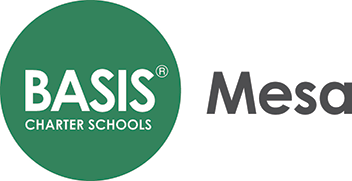3/17/24: No Rest for the Wicked
This week, while I am on Spring Break, I have decided to do a great deal of research into the project. While many questions remain unanswered, just as many have been explained.
David Sim’s book Roman Imperial Armor, recommended to me by Mr. McMath’s colleague, describes that under the emperor Hadrian, the total number of soldiers that needed to be fit with weapons, armor, and other equipment was equal to nearly 350,000 (in both the army and navy). For scale, usafacts.org puts the total number of soldiers in the United States Army at 453,000 as of 2023. So, how did Roman blacksmiths create a third of a million full sets of armor and weapons without any electricity or power tools?
The answer lies in the fact that blacksmiths would have been much more common than we can think of today. Every piece of hardware, including nails, screws, handles, hinges, as well as the tools that other craftsmen need, must have been forged by blacksmiths. This means that a great number of blacksmiths would have already been found throughout the population. Furthermore, a Roman legion operated much like a mobile city. Each legion was composed of 10 cohorts of foot soldiers, each cohort being comprised of 6 centuries, each of 80 troops. In all, each legion numbered to nearly 5,500 troops, including reserves, cavalry support, and logistic workers. As civilians made their way into legions, their skills from everyday life would be considered by a board of centurions who would decide what their job would be within the legion. Hence, blacksmiths would be put to work arming and repairing military equipment.
This means that there was a wide variety of smiths altogether in helmet production. Helmets made within each legion might resemble one another, but inevitably helmet designs would diversify, as smiths intentionally or accidentally change aspects of their design. Thus, the naming convention of Roman helmet classifications: the helmet I’m producing is known as a Roman Imperial Gallic G helmet. That means it is a Roman helmet, produced and used in Gallia (Gaul, a region of France), and it is a specific variant “G” of the general Gallic shaped helmet.
For example, here are two replicas, a Roman Imperial Italic (left), and a Roman Imperial Gallic “G” (right).
The basic premise of these helmets is very similar: Hinged guards for the cheeks, a protrusion protecting the neck, and a brim just above the forehead to protect against downward slashes to the face. However, the Gallic helmet differs in that the brow is much thinner, the neck guard is much shorter, it has brass trim around the edges which contact the skin, and, of course, it has decorative eyebrows. Without a doubt, helmets were specialized by each region in order to provide advantages towards the different types of weapons and dangers found in each respective region.
Below is a replica of a Roman Imperial Gallic “H” helmet. The design is extremely similar, but the helmet’s neck guard is more angled downwards. The crest on top of the helmet isn’t specific to the H-variant — those are just ornamental decorations that Roman legionaries could attach during parades and such.
Examining original artifacts, I’ve discovered that we only have one to two of each letter variant. That means that helmets varied from one another, and each smith and legion had different specifications of angles and dimensions for the helmet. This alleviates a lot of the stress of getting my project as close to an original as possible, because even the originals varied in the particular specifications.
I have also been able to make significant progress towards my own project:
These few photos focus on the back half of the helmet. In the first photo, I’ve finished rounding out the bowl of the helmet (the shape was still somewhat conical at that point, this was later fixed) to allow me to weld the piece of the helmet that reaches down to cover the lower back part of the skull. The good news from this part is that my electrical welding is getting better, but still not professional grade. In the second photo you can see that I am using flux-core wire, which is difficult to keep clean and consistent, but despite that I managed to get a clean workable weld as I attached the part that protects the neck of the wearer. The section of the helmet that goes straight down is a little bit long for my taste, but I can still correct that this week as I finish up the rest of the steel “base” to which all the bronze fittings are attached.



I also began the process of “repousse” — a French term meaning “pushed up,” rooted from the Latin term “pulsare,” meaning to push or to beat. In this process, I set the helmet over a repousse stake of any desired form, and then I hammer on either side of the stake to push the shape of the stake up through the steel. I made a quick demonstration of this technique here: https://youtube.com/shorts/O1tURXwKMfM?feature=share
Below is the aftermath on the helmet. I also included some photos of a coal forge I made with my dad, which I used to make the repousse stake. There’s also a view of the eyebrows from the inside of the helmet.




The eyebrows will have to be “chased,” or refined with a chisel to make them crisper and stand out more. I will also have to lightly hammer over the marks I’ve made in order to smooth out the helmet’s surface in a process known as “planishing,” which makes it possible for me to polish it.



